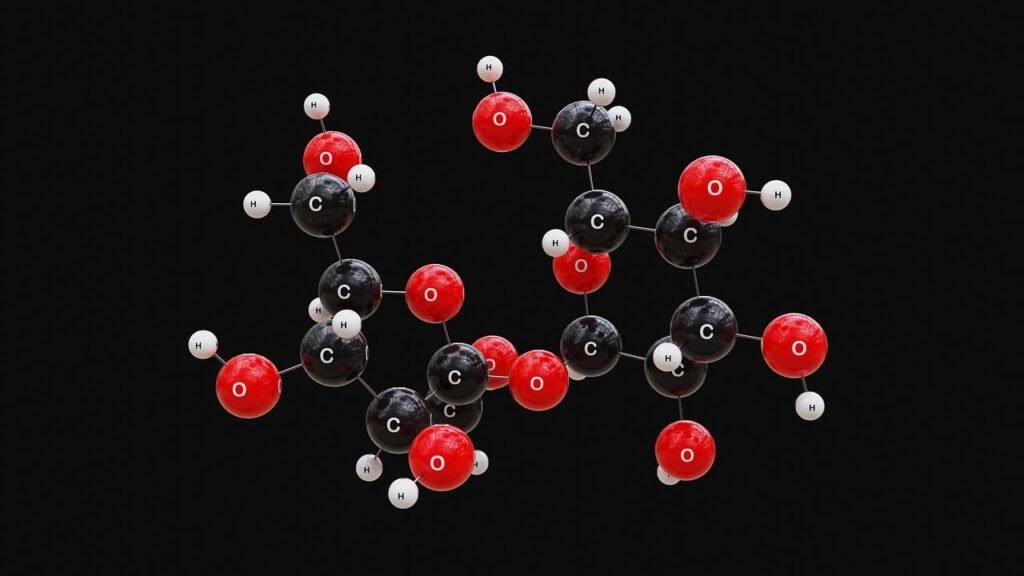
Introduction to Aspartame and Aspartate

Aspartame and aspartate are frequently confused due to their similar names, but they have distinct roles and properties that are important to understand.
Aspartame is a popular artificial sweetener used in various low-calorie and sugar-free products, such as diet sodas and sugar-free gum.
This compound has garnered attention for its ability to provide sweetness without the calorie content associated with regular sugar.
In contrast, aspartate is a naturally occurring amino acid that plays a crucial role in human biology.
It is one of the 20 amino acids that form the building blocks of proteins, essential for various bodily functions.
Unlike aspartame, aspartate is not used as a sweetener but is involved in essential metabolic pathways, contributing to protein synthesis and energy production.
The origins of these compounds also highlight their differences.
Aspartame is synthesized through a chemical process, combining aspartic acid and phenylalanine with a methyl ester bond.
This synthesis allows it to mimic the taste of sugar while offering a lower caloric content, making it an attractive option for those looking to reduce their sugar intake.
Aspartate, on the other hand, is naturally produced by the body and does not require dietary intake for its presence.
It is considered a non-essential amino acid because the human body can produce it internally.
This intrinsic production underscores its importance in various physiological processes, from the urea cycle to neurotransmitter synthesis.
Despite their different roles and origins, both compounds are integral to various aspects of health and nutrition.
Aspartame’s role as a low-calorie sweetener has made it a staple in diet and health-conscious communities.
Meanwhile, aspartate’s involvement in fundamental metabolic processes highlights its importance in maintaining bodily functions.
Understanding the distinction between aspartame and aspartate is crucial for making informed choices about diet and nutrition.
While aspartame is often used to reduce caloric intake without sacrificing sweetness, aspartate supports essential biological functions, contributing to overall health.
This differentiation is key for anyone interested in nutrition and health science.
Chemical Composition

Aspartame and aspartate differ significantly in their chemical structures.
Aspartame is a dipeptide composed of two amino acids, aspartic acid and phenylalanine, linked by a methyl ester bond.
Upon digestion, aspartame breaks down into three components: aspartic acid, phenylalanine, and methanol.
This breakdown is crucial to its function as a sweetener.
Aspartate, on the other hand, is a simpler compound.
It is one of the 20 amino acids that make up proteins in the body. As a non-essential amino acid, it is synthesized naturally and does not need to be obtained directly through diet.
Functional Variations

The functions of aspartame and aspartate highlight their key differences. Aspartame is primarily known for its role as a low-calorie sweetener.
It is commonly used in products marketed as sugar-free or diet, providing sweetness without the calorie load of sugar.
Aspartate plays a vital role in protein synthesis.
It is an important building block of proteins and is involved in various metabolic pathways, such as the urea cycle, where it helps in the elimination of excess nitrogen from the body.
Body Metabolism

Aspartame and aspartate are metabolized in distinct ways within the human body.
When consumed, aspartame is quickly broken down in the small intestine.
Approximately 50% of aspartame metabolizes into phenylalanine, about 40% into aspartic acid, and the remaining portion into methanol.
This rapid breakdown is essential for its role as a non-caloric sweetener, allowing it to contribute to sweetness without significantly impacting calorie intake.
However, it is noteworthy that while aspartame is used as a non-caloric sweetener, it does provide some nutritive value: 1 gram of aspartame offers roughly 17 kJ (4 kcal).
In contrast, aspartate’s role in metabolism is primarily linked to several critical biological pathways.
One of the key pathways involving aspartate is the citric acid cycle, also known as the Krebs cycle.
This cycle is vital for energy production, where aspartate helps generate ATP, the energy currency of cells. Additionally, aspartate is involved in the urea cycle, where it aids in the detoxification and elimination of excess nitrogen from the body.
Aspartate also contributes to the biosynthesis of other amino acids.
This amino acid can be converted into various other compounds necessary for diverse metabolic functions.
For instance, aspartate can be transaminated to form oxaloacetate, which then enters the citric acid cycle to produce energy.
Alternatively, it can be used to synthesize asparagine, another amino acid, through an amidation reaction.
The metabolic pathways of aspartame and aspartate reflect their different roles and uses.
Aspartame’s breakdown products, including phenylalanine and aspartic acid, are utilized by the body in various ways.
Phenylalanine is an essential amino acid that must be obtained from the diet and is used to produce proteins and other important molecules.
Aspartic acid, although non-essential, plays significant roles in metabolism and neurotransmitter synthesis.
While aspartame’s primary function is to provide sweetness without the high caloric content of sugar, aspartate serves more foundational metabolic roles.
Its involvement in the citric acid cycle, urea cycle, and amino acid biosynthesis underscores its importance in maintaining cellular energy and overall metabolic balance.
These distinct metabolic pathways highlight why aspartame and aspartate, despite their similar names, have very different impacts on the body.
Understanding these differences helps in making informed choices regarding diet and nutrition.
While aspartame offers a sugar alternative for those looking to manage calorie intake, aspartate is essential for various metabolic processes that sustain life.
Food and Nutritional Applications

Aspartame is widely incorporated into various food and beverage products due to its intense sweetness and low caloric content.
This artificial sweetener is a common ingredient in diet sodas, sugar-free gums, and a variety of desserts, offering a sweet taste without the additional calories that come with regular sugar.
Its ability to provide a similar taste to sugar, while significantly reducing caloric intake, makes it an attractive option for individuals looking to manage their weight or control blood sugar levels.
Aspartame’s usage extends beyond just beverages and confections.
It is also found in low-calorie yogurts, cereals, and even some pharmaceutical products like chewable vitamins and sugar-free cough drops.
This broad application showcases its versatility as a sweetening agent that fits into various dietary regimes, from diabetic-friendly diets to general low-calorie consumption plans.
The appeal of aspartame is enhanced by its high sweetness potency, which is approximately 200 times sweeter than sucrose, allowing smaller quantities to achieve the desired sweetness.
In contrast, aspartate, while not used as a sweetener, is integral to dietary supplements and high-protein foods.
Its role in protein synthesis and energy production makes it valuable for athletes and individuals focused on muscle building and recovery.
Aspartate can be found in protein powders, energy bars, and other sports nutrition products designed to support enhanced physical performance and quicker recovery times post-exercise.
Beyond sports nutrition, aspartate is present in foods rich in protein, such as meat, fish, dairy products, and certain plant-based sources like soybeans.
These foods provide the necessary amino acids, including aspartate, that contribute to overall protein intake and support various bodily functions.
For individuals seeking to increase their intake of amino acids for muscle growth or metabolic health, consuming a diet rich in these protein sources can be beneficial.
Furthermore, aspartate’s role is not limited to physical health but extends to cognitive function as well.
It participates in neurotransmitter synthesis, which can influence brain health and cognitive performance.
Foods and supplements containing aspartate can, therefore, contribute to maintaining a balanced diet that supports both physical and mental well-being.
In summary, while aspartame and aspartate serve different purposes in the food and nutrition landscape, both play crucial roles.
Aspartame offers a solution for those looking to enjoy sweet flavors without the added calories, making it a staple in many low-calorie and sugar-free products.
On the other hand, aspartate is vital for those needing to boost their protein intake for muscle growth and recovery, underlining its importance in athletic and general nutrition.
These applications demonstrate how both compounds, despite their differing functions, are essential in diverse dietary contexts.
Health and Safety Issues

The safety of aspartame has been extensively studied and debated. Approximately 10% of aspartame’s weight is converted into methanol in the small intestine, which is then swiftly converted into formaldehyde.
The FDA, along with other health organizations such as the European Food Safety Authority (EFSA) and the World Health Organization (WHO), has reviewed numerous studies and concluded that aspartame is safe for human consumption when used within established acceptable daily intake levels.
The primary concern with aspartame stems from its breakdown products: phenylalanine, aspartic acid, and methanol.
Each of these components occurs naturally in many foods and is not harmful at the levels produced by typical aspartame consumption.
However, individuals with the genetic disorder phenylketonuria (PKU) must monitor their intake of phenylalanine, as they cannot metabolize it effectively.
For this reason, products containing aspartame are labeled to alert consumers with PKU.
Beyond regulatory reviews, various studies have explored potential links between aspartame and health issues such as cancer, neurological disorders, and cardiovascular problems.
To date, these studies have not found conclusive evidence to suggest that aspartame, at levels consumed by the average person, poses a significant risk.
For instance, large-scale studies have not found a consistent link between aspartame intake and an increased risk of cancer.
Additionally, concerns about neurological effects, such as headaches or seizures, have not been consistently supported by scientific evidence.
Aspartate, being a naturally occurring amino acid, is generally safe when consumed as part of a regular diet.
However, the balance of amino acids in the body is crucial.
Imbalances can affect various metabolic functions, but such issues are typically linked to dietary deficiencies or excesses rather than to the amino acids themselves.
Normal dietary intake of aspartate through protein-rich foods is unlikely to pose any health risks.
In summary, both aspartame and aspartate have been evaluated for safety, with regulatory agencies and scientific studies supporting their use within recommended guidelines.
Aspartame, as a synthetic sweetener, offers a low-calorie alternative to sugar, while aspartate, as an amino acid, plays vital roles in the body’s metabolic processes.
Public Perception and Misconceptions

Aspartame has long been a topic of debate and concern among the public.
One prevalent misconception is that it is associated with severe health conditions, including cancer and neurological disorders.
These fears often stem from misunderstandings about the components that result from its breakdown, such as methanol and formaldehyde.
However, it’s essential to note that the levels of these substances produced by the metabolism of aspartame are minimal and are also found naturally in various fruits and vegetables at higher levels.
Regulatory agencies like the FDA and EFSA have reviewed extensive research and consistently affirm that aspartame is safe for consumption within the established guidelines.
Despite these assurances, some people remain wary due to anecdotal reports and misinformation spread through various channels, including social media.
For example, the idea that aspartame causes headaches or seizures is not supported by robust scientific evidence.
Large-scale studies have not found consistent links between aspartame consumption and an increased risk of these issues.
The continued circulation of these myths can be attributed to confirmation bias and the spread of unverified information.
Aspartate, although not as widely discussed, also faces some confusion due to its name’s similarity to aspartame.
Unlike aspartame, aspartate is a naturally occurring amino acid and is crucial for various biological processes, including protein synthesis and energy production.
Some individuals mistakenly associate aspartate with the artificial sweetener, leading to unfounded concerns about its safety.
It is important to emphasize that aspartate is essential for normal bodily functions and is present in many protein-rich foods like meat, dairy, and legumes.
Clarifying the distinction between aspartame and aspartate can help dispel many of these misconceptions.
Aspartame is a synthetic compound designed to mimic the sweetness of sugar without the associated caloric intake, making it a popular choice for those looking to reduce their sugar consumption.
Aspartate, on the other hand, is a fundamental building block of proteins and is vital for maintaining metabolic balance.
Educational initiatives and transparent communication from health authorities can play a significant role in correcting these misunderstandings.
By providing clear, evidence-based information, it is possible to address public concerns effectively.
Consumers should be encouraged to rely on reputable sources and scientific studies when evaluating the safety of food additives like aspartame.
Understanding the science behind aspartame and aspartate can lead to more informed dietary choices.
As research continues to evolve, staying updated with the latest findings from trusted health organizations will help ensure that public perceptions align more closely with scientific evidence.
Conclusion and Overview

Understanding the differences between aspartame and aspartate is essential for making informed dietary and nutritional choices.
Despite their similar names, these two compounds serve distinct purposes and have unique roles in the body.
Aspartame, a synthetic sweetener, is commonly used to reduce caloric intake without sacrificing taste, making it popular in various low-calorie and sugar-free products.
This artificial sweetener is highly effective due to its intense sweetness, which is approximately 200 times greater than that of sucrose.
On the other hand, aspartate is a naturally occurring amino acid integral to many metabolic processes.
Its primary functions include protein synthesis, energy production, and participation in crucial pathways such as the citric acid cycle and the urea cycle.
Aspartate is found in high-protein foods and supplements, making it valuable for athletes and individuals focused on muscle building and recovery.
Both aspartame and aspartate have been scrutinized for their safety.
Regulatory agencies, including the FDA and EFSA, have deemed aspartame safe for consumption within established guidelines, despite concerns about its breakdown products, such as methanol and formaldehyde.
It is essential to note that these substances are also found naturally in various foods and are not harmful at the levels produced by typical aspartame consumption.
Aspartate, being a naturally occurring amino acid, is generally safe when consumed as part of a balanced diet.
Public perception often clouds the understanding of these compounds.
Misconceptions about aspartame’s potential health risks persist, despite a lack of robust scientific evidence linking it to severe conditions like cancer or neurological disorders.
Similarly, confusion about aspartate arises due to its name’s similarity to aspartame.
Clarifying these differences is crucial for dispelling myths and ensuring that dietary choices are based on accurate information.
In the realm of nutrition, both compounds have their place.
Aspartame offers a solution for those looking to reduce sugar intake without compromising on sweetness, fitting seamlessly into various dietary plans aimed at weight management or blood sugar control.
Aspartate, by contrast, is indispensable for those seeking to support their metabolic health and enhance physical performance through a diet rich in protein.
By understanding the distinct roles and applications of aspartame and aspartate, individuals can better navigate their dietary choices.
Whether the goal is to manage calorie intake or support metabolic functions, recognizing these differences allows for more informed and balanced nutrition decisions.
